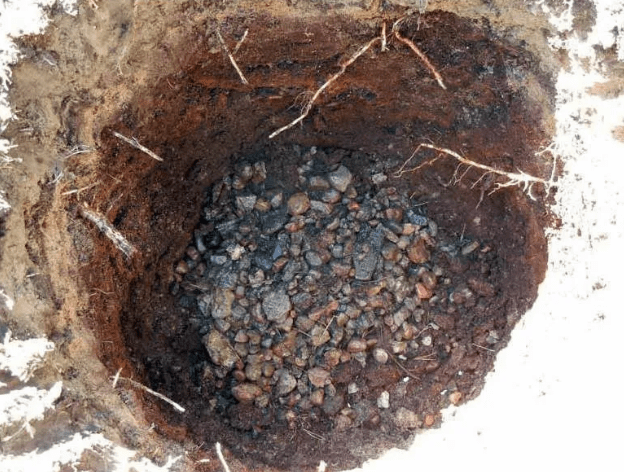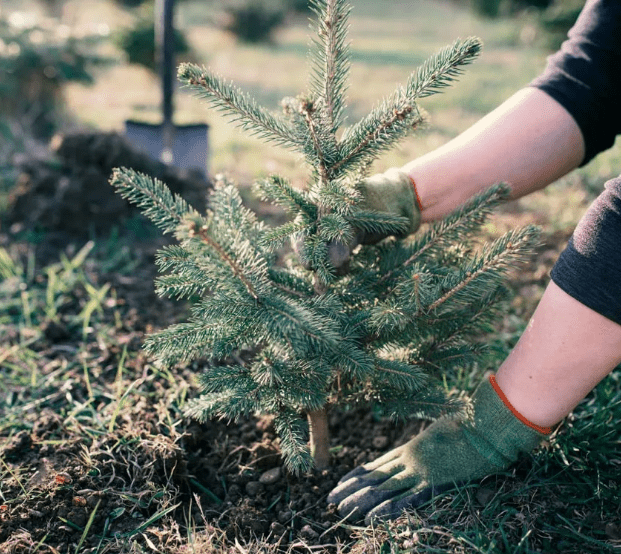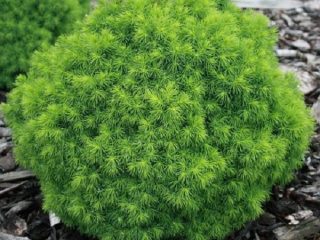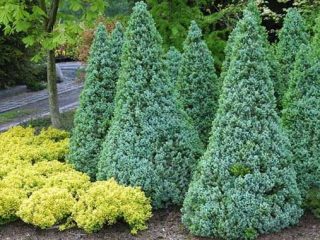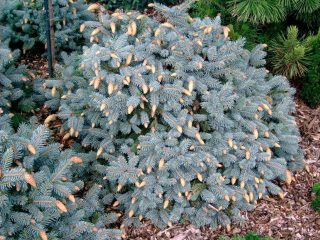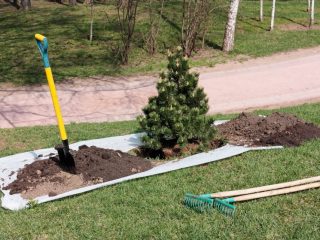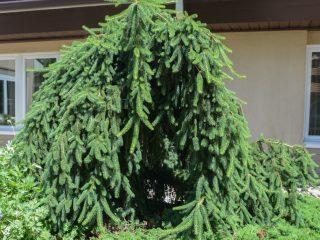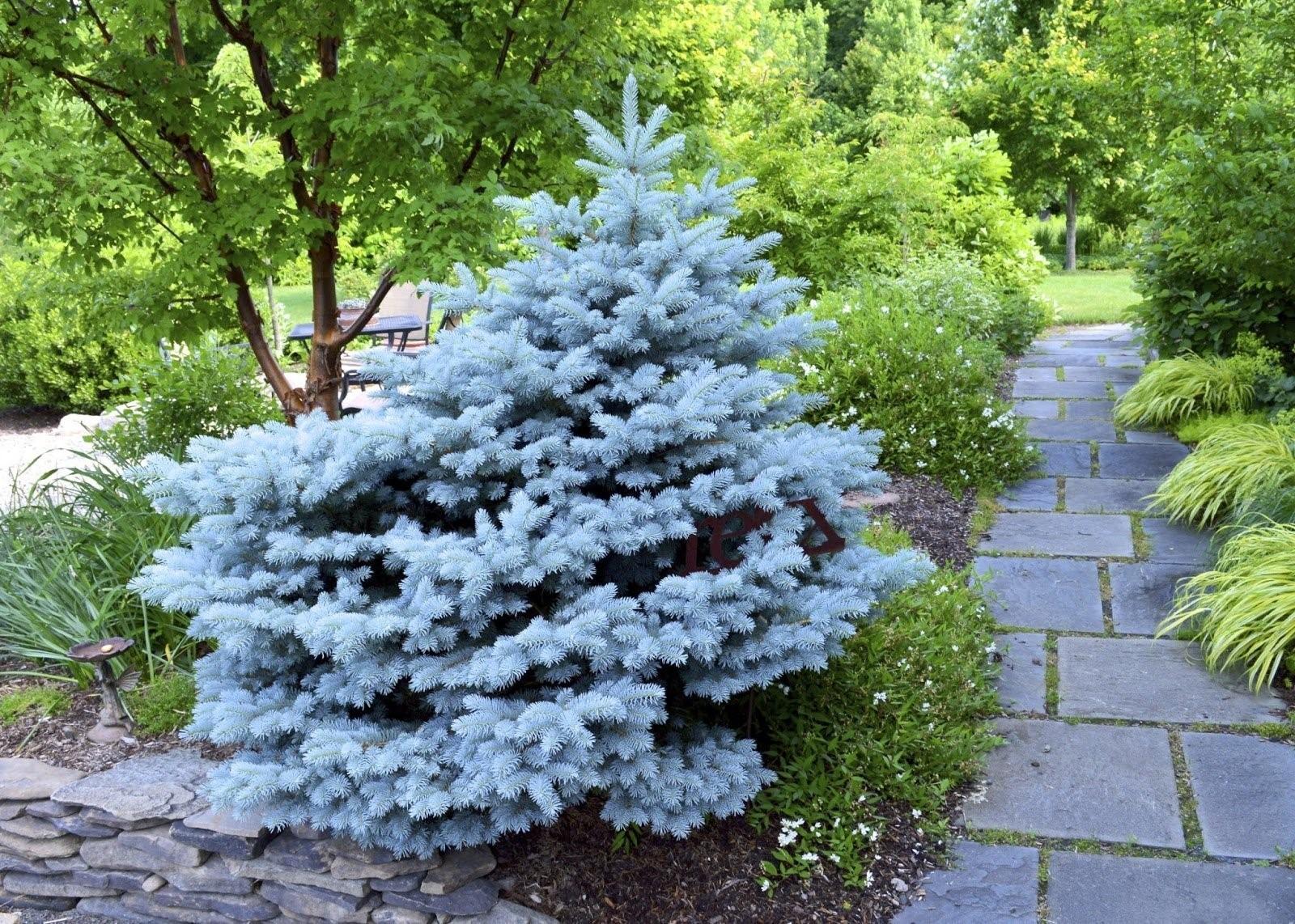Content
Hoopsy spruce is one of the most spectacular representatives of the Pine family with a regular wide-conical crown and hard silver-blue needles. Due to its increased winter hardiness, undemandingness to soils and immunity to polluted air, it is successfully used for landscaping megacities and urban gardens.
Origin story
According to some sources, the blue spruce variety Hoopsie was bred in 1958 in the famous German nursery Hoops Nursery. A group of breeders led by F. J. Grotendorst worked on its creation.

Subsequently, the variety was exhibited at an exhibition on behalf of the company FJ Grootendorst (Boskop, the Netherlands)
According to other sources, a Hoopsie blue spruce seedling was discovered in the USA at the beginning of the 20th century. In 1922, the conifer was exported to Europe and only then did the breeders of Hoops Nursery become interested in it.
Description of blue spruce Hoopsie
Prickly spruce of the Hoopsii variety (picea pungens Hoopsii) is an ornamental tree with a regular pyramidal crown formed by short, almost horizontal shoots.The densely planted flexible, elastic branches are painted pale brown and densely strewn with hard, prickly needles covered with a waxy coating. Silver-blue needles grow 20-30 mm long and live up to four years.

Thanks to the structure of the branches and needles, Hupsey, unlike other spruce trees, practically does not break under the weight of adhered snow
In early spring, very beautiful cones appear on the tree. At first they are colored pinkish-purple.
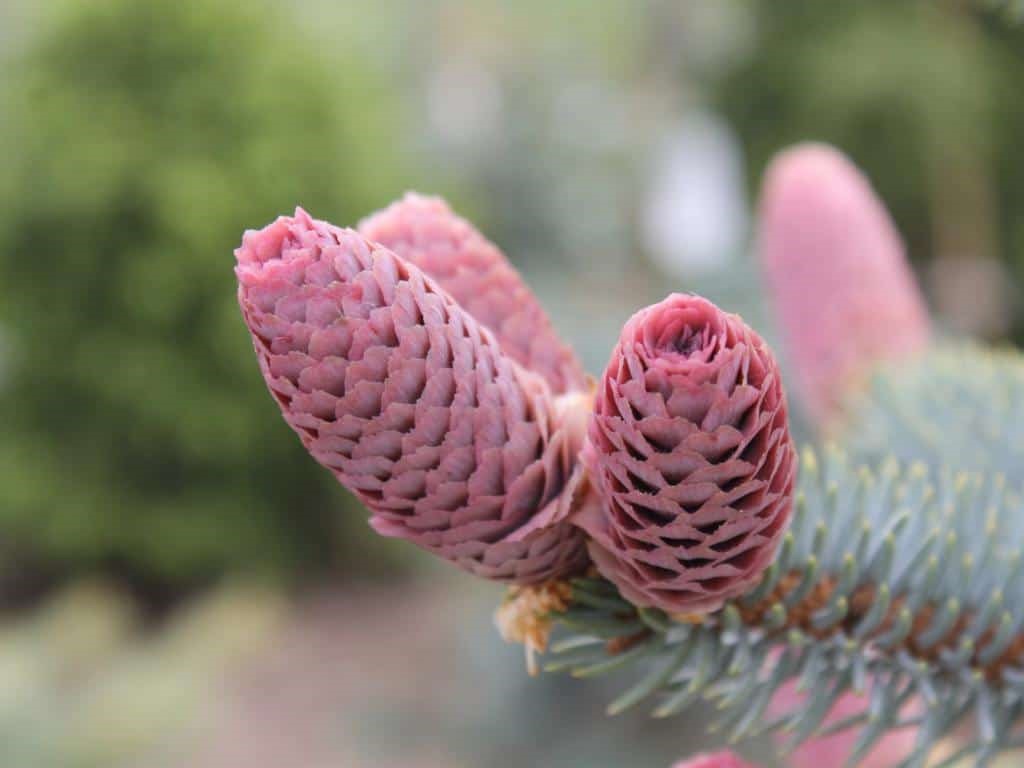
Over time the buds turn brown
During the first 10-15 years, the root system of the prickly spruce variety Hoopsie is taproot. Then the main root dies, and the tree lives off of broad, shallow roots.
Dimensions and diameter of spruce
When grown in different regions, including the Moscow region, the height of Hoopsie spruce reaches 10-15 m. The diameter of the tree is 3-4.5 m.
Growth rate of Hoopsie spruce
The tree belongs to the category of slow-growing. The average annual growth of the crown is 12-15 cm.
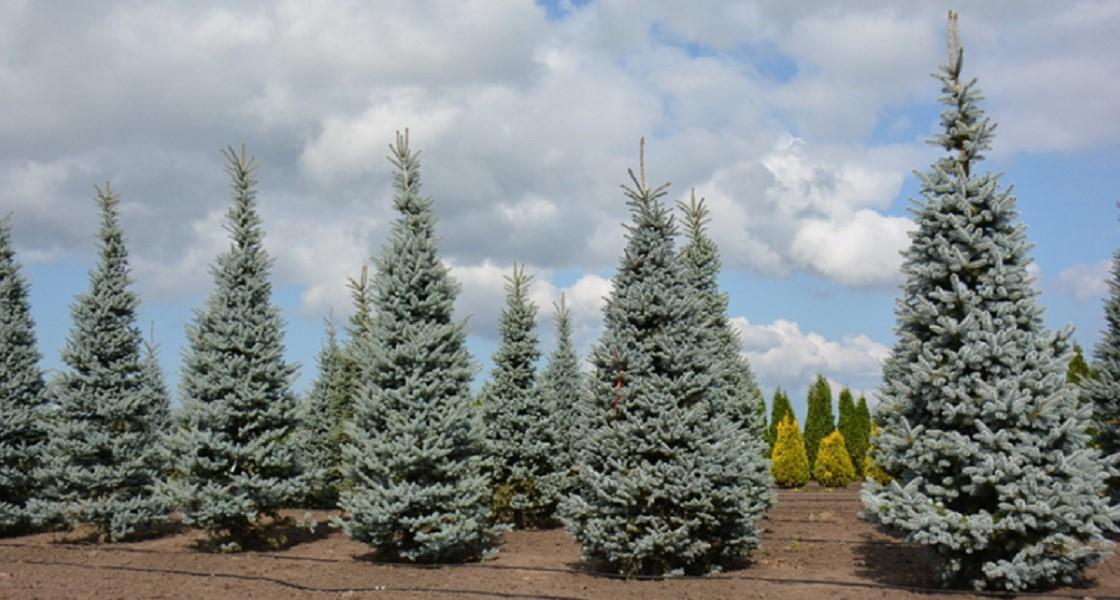
In the first years of life, the conifer develops more slowly and by the age of 10 it grows by 2-2.5 m
Advantages and disadvantages
The prickly spruce of the Hupsi variety is characterized by high frost resistance and has hard needles of an unusual silver-blue hue. Its flexible shoots are located almost perpendicular to the trunk and create a fluffy crown.

Due to its shallow root system, Hoopsie is vulnerable to strong winds, but tolerates transplants easily.
Pros:
- undemanding to soils;
- high frost resistance;
- beautiful shade of pine.
Minuses:
- low wind resistance;
- susceptibility to parasites;
- requirements for illumination.
Planting the Hoopsie prickly spruce
To be sure of the quality and health of planting material, it is recommended to buy seedlings from nurseries.When choosing a tree, it is important to make sure that its needles correspond to the botanical description. The trunk of the seedling should be within 50-100 cm. It is better not to replant taller specimens, since the likelihood that they will take root is extremely low.
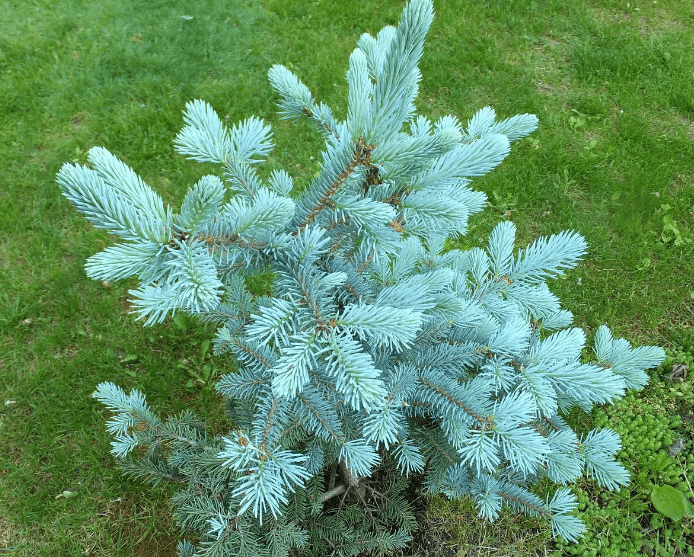
Slight curvature of the tree is not considered a fault and can be corrected with good care.
The best time for planting is considered to be from the end of April to the second half of June. The tree grows well on loamy, drained soils and does not tolerate waterlogging. It is recommended to plant it in illuminated areas with deep underground waters. When grown in the shade, the tree will develop, but its needles will not be blue, but greenish. Hoopsie should not be planted after nightshade crops. The soil in this area may be contaminated with Fusarium spores.
Ideally, it is better to bring forest soil to the site for planting Hoopsie spruce. If this is not possible, a mixture of equal amounts of peat, river sand, turf and leaf soil is added to the prepared hole. Planting is carried out on a cloudy day, proceeding according to the following scheme:
- Dig a hole measuring 50x60 cm.
- A drainage layer about 20 cm thick is laid at the bottom. A mound of fertile soil, designed for the length of the roots, is poured on top.
- A seedling is placed in the center and sprinkled with remaining soil so that the root collar rises above the surface.
The tree is watered with 20 liters of non-cold, settled water and, after waiting for the moisture to be absorbed, mulched with peat.
Rules of care
Although Blue Hoopsie spruce belongs to the category of unpretentious coniferous trees, it requires basic care, which includes:
- Watering. This variety does not tolerate waterlogging. Young trees are watered more often. If possible, in hot evenings the seedlings are given sprinkling to speed up growth.Adult Hoopsie spruce trees are watered once a week at the rate of 10-12 liters of water for each tree. In hot, dry weather, the soil under the conifers is moistened twice a week.
- Feeding. Conifers react poorly to excess nitrogen, so fertilizing them with manure is not recommended. To activate growth, mineral compounds, compost or vermicompost are added to the ground under the Hoopsie spruce. It is best to fertilize the tree with special mixtures for coniferous species. 50-150 mg of fertilizer is diluted in 10 liters of water and the spruce is watered with the resulting solution. This is usually done in early May and in preparation for winter.
- Shelter for the winter. Blue prickly spruces of the Hupsi variety are characterized by high frost resistance. Mature trees tolerate winter well and do not require additional insulation. Young spruce trees may not be able to withstand the weight of a thick layer of snow and need to be prepared for winter. Tree branches are lifted up and tied to the trunk. To prevent the needles from being damaged by too much sun, young spruce trees are covered with a cloth at the end of winter and early spring.
Formation of the Hoopsie spruce
The Hoopsie spruce tree needs annual pruning. It is carried out in the middle or end of June, when the growth of new shoots stops.
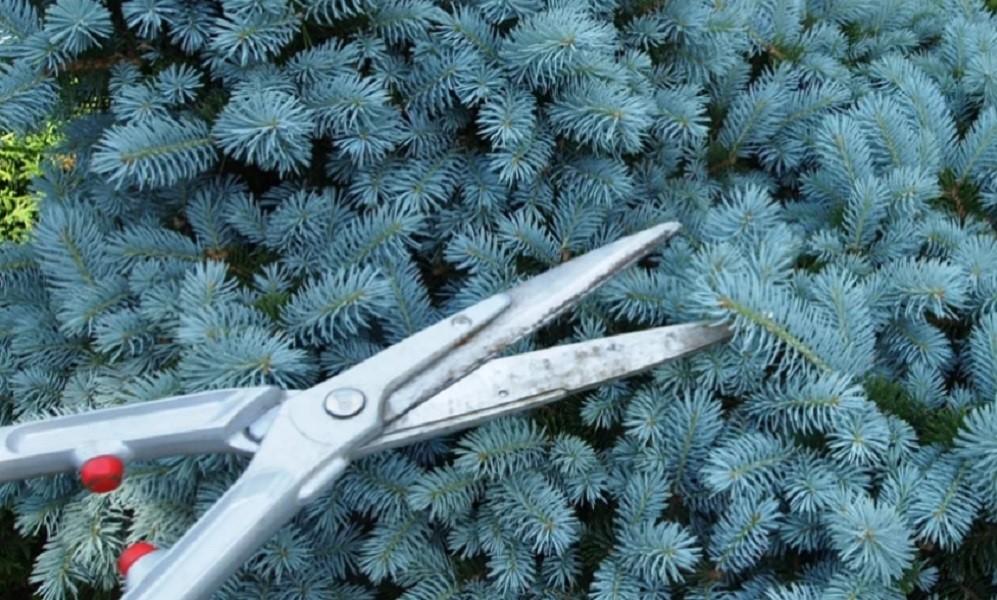
If you prune a tree later than the first ten days of August, there is a risk that the wounds will not have time to heal before the onset of cold weather
Hoopsii spruce is trimmed with a sharpened, disinfected tool, taking into account the natural contours of adult specimens. To obtain softness, the tips of the branches are shortened along an ascending line. There is no need to treat the cuts with garden varnish, since the tree actively secretes resin that performs the same functions.
Reproduction
Hoopsie can be propagated by two methods:
- Seeds. A rather labor-intensive method that requires a lot of time and patience.To implement it, the seeds of the prickly blue spruce Hoopsii are sown in a box filled with a mixture of sand and compost, covered with polyethylene and sprayed with a sprayer as the soil dries. When shoots appear, the film is removed to provide air access.
- By cuttings. The best time to implement this method is considered to be spring, and more specifically, the first half of May. Cuttings are cut from branches of healthy spruce trees at least 4-5 years old, treated with a growth stimulator and planted in moist soil. The root system is usually formed within 2-3 months.
Diseases and pests
The variety is resistant to most diseases and pests. The most dangerous diseases for Hoopsie spruce are fungal diseases and pine aphids. The appearance of a reddish tint on the needles indicates infection with the Schutte fungus.

To revive the tree, it is treated with fungicides
Also, Hoopsie spruce is susceptible to fusarium, which is accompanied by drying of the tree. To save the conifer, you need to contact a specialist, since improper treatment is fraught with irreversible consequences.
Young spruce trees often suffer from attacks from sawflies that eat growing needles. You can destroy pests with the help of Fury or Actellik. No less dangerous for Hoopsie are small ticks, the infestation of which is indicated by the appearance of barely noticeable webs. Acaricides can be used to combat them.
Photo of the prickly Hoopsie spruce in landscape design
Due to its high decorative value and unusual shade of needles, Hoopsie blue spruce is successfully used in landscape design.
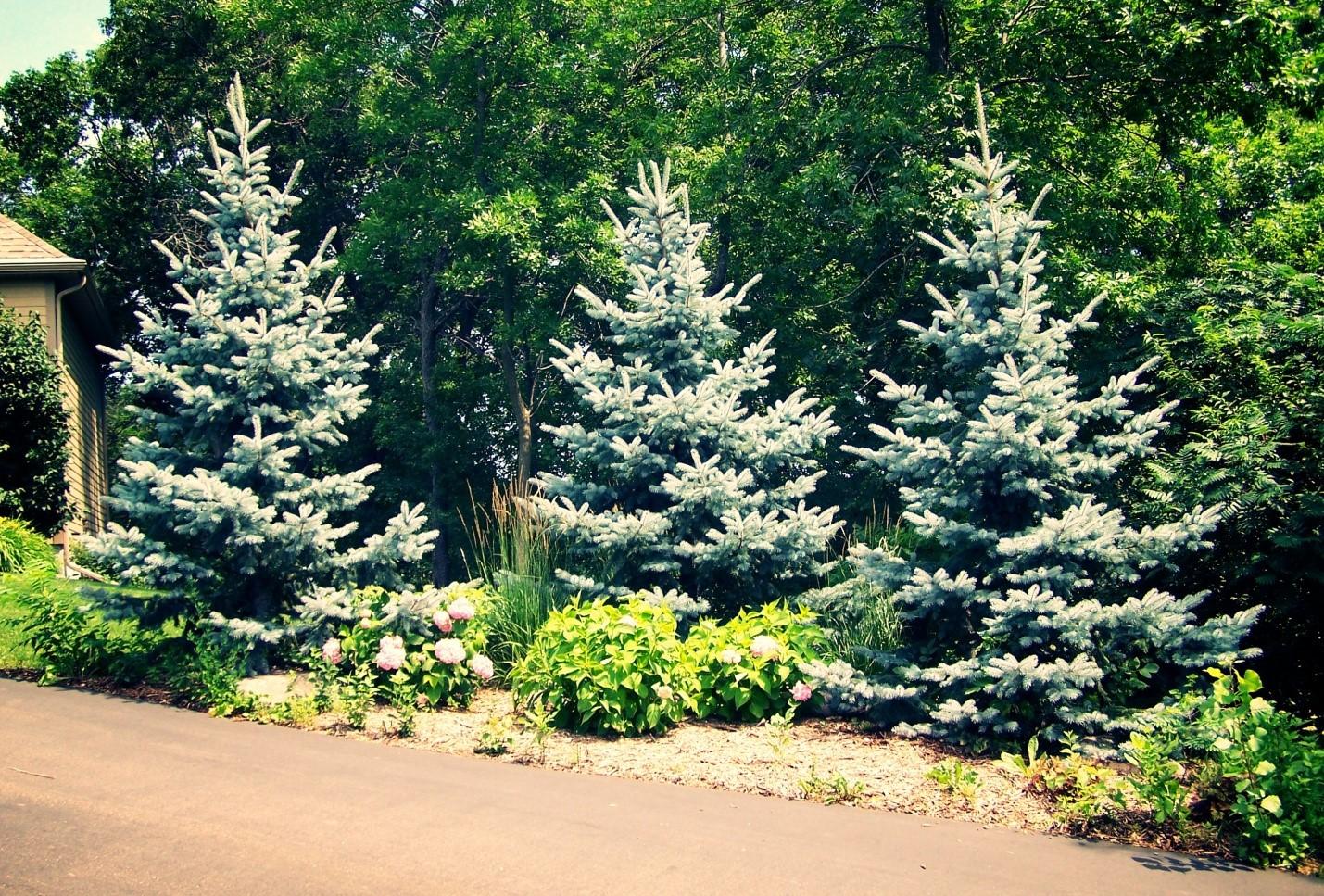
The tree is used in landscaping vast garden and park areas, city squares and streets
Due to their compactness, relatively low growth rate and low maintenance requirements, Hoopsie spruce trees are planted along paths and alleys.
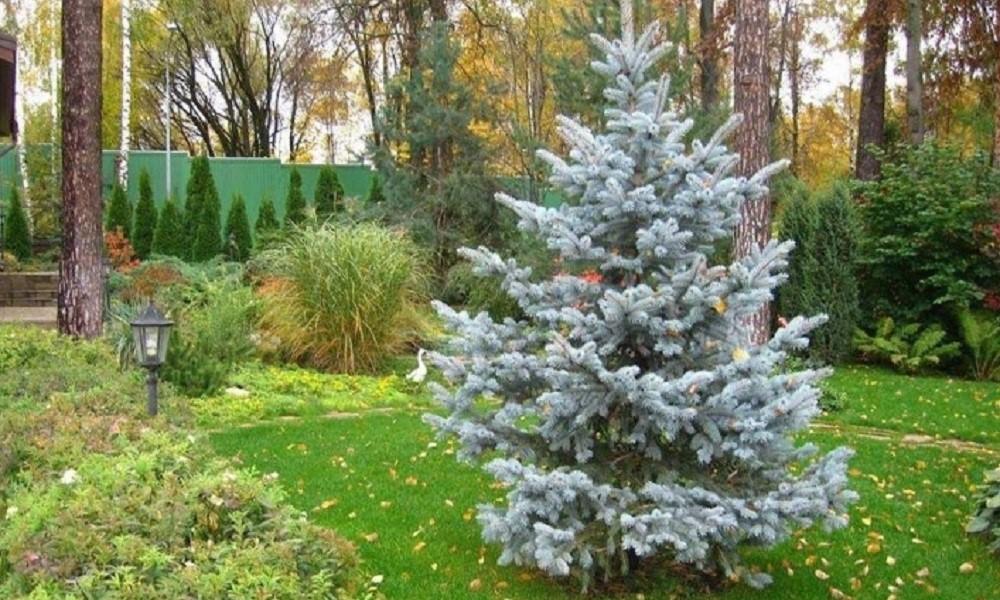
Prickly conifers grow well in megacities and do not lose their decorative value even in heavily polluted areas
Hoopsie blue spruces are equally appropriate near a shopping center, near a children's playground, in a city park, or in a summer cottage.
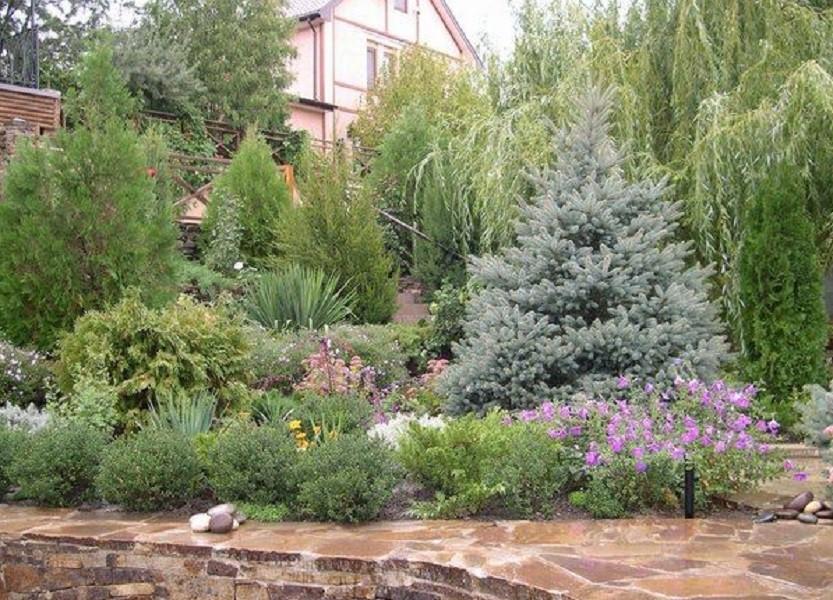
Conifers look organic next to any plants, but they look most impressive against the backdrop of green spaces
Hoopsies are equally suitable for both group and single plantings. Many landscape designers consider the idea of combining mature and young spruce trees on one site to be successful. Conifers look organic next to oaks, willows, maples, barberries, lilies and cereals. But you need to be careful with roses, since spruce trees acidify the soil, which negatively affects the growth and development of the queen of flowers.
Conclusion
Hoopsie spruce is a coniferous tree with a luxurious silver-blue crown, designed specifically for decorating large areas. The variety is characterized by high frost resistance and low maintenance requirements, thanks to which it is successfully used to decorate city parks and squares.
Owner reviews of Hoopsie spruce

